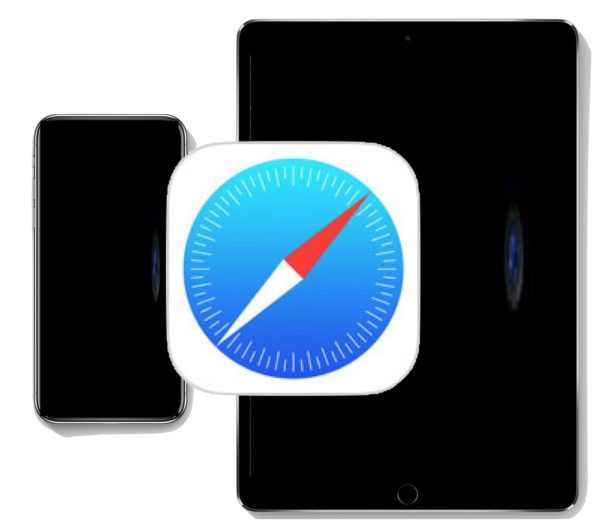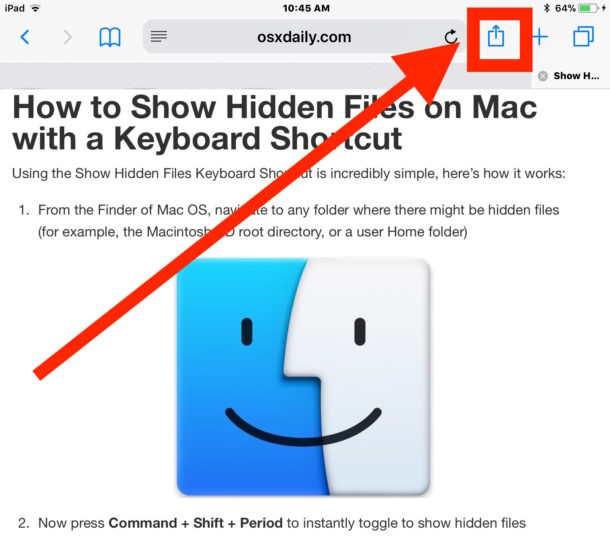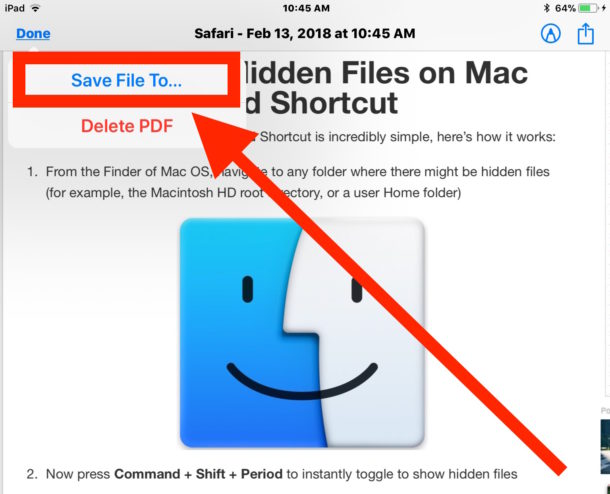

Want to save a web page as a PDF on iPad or iPhone? Generating PDF files of webpages and web articles is now easier than ever before in iOS, thanks to a new obvious “Create PDF” feature that is available in modern system software releases.
Any iPhone or iPad running iOS 11 or later now has the capability of creating a PDF file from any webpage in Safari through a direct feature; that means there is no more guesswork with hidden Save As PDF iOS gestures, or printing PDF 3D Touching, or forced use of iBooks (though those tricks still work if you prefer the secret approach), instead you can just directly initiate PDF creation with a simple method we will detail here in this tutorial.
This offers by far the fastest and easiest way to turn any web article or webpage into a PDF file on iOS.
This ‘Create PDF’ feature requires iOS 11 or newer. The walkthrough below demonstrates this capability on iPad but the feature is identical on iPhone as well.
![]()





A PDF file of the active webpage has now been created and saved to the Files app on the iPad or iPhone.
You can confirm the webpage PDF was created and saved properly by going to the “Files” app in iOS and then choosing the iCloud Drive folder or location you chose to save the PDF to.

* Before tapping on Done, you can also tap the little marker and use Markup to draw, doodle, or write on the PDF file if desired.
By default the name of generated PDF files from Safari will be in the format of “Safari – (Date of Creation) – (Time of Creation).pdf” but you can always rename it in the iOS Files app to be something more descriptive if desired.
Because Files app is also iCloud Drive, you can access the saved webpage PDF from any other iOS device or Mac that uses the same Apple ID via the Files app in iOS or via iCloud Drive on a Mac.
Oh and here’s a bonus quick tip that can help any created PDF files from Safari look a bit better: if a webpage saved as PDF is a little too cluttered, or you just want to remove any extra styling, you can use the use the Reader trick for printing webpages and articles without ads from iOS Safari and then use the Create PDF method once Reader mode has been activated on the article in question. The Reader view strips out just about all styling on a webpage and just leaves the text and images remaining, which can make for a simpler looking PDF file as well.
As mentioned before, you’ll need one of the most modern iOS releases to have access to Create PDF feature in the Safari Sharing function. You can either update to iOS 11 or later to gain this PDF creation capability, or rely on a different method of saving webpages as PDF files. Four alternative options for generating PDF documents of webpages include:
Each of those methods offers the same end result of a PDF file generated from a webpage, but with the new direct “Create PDF” option available in Safari for modern iOS it is hard to want to recommend any other choice unless your iPhone or iPad is on an older system software release.
Do you know of any other handy tips, tricks, or techniques for generating PDF files from webpages on an iPad or iPhone? Share them with us in the comments!